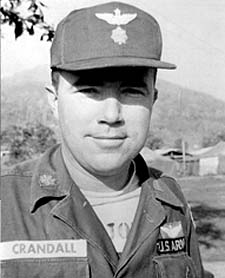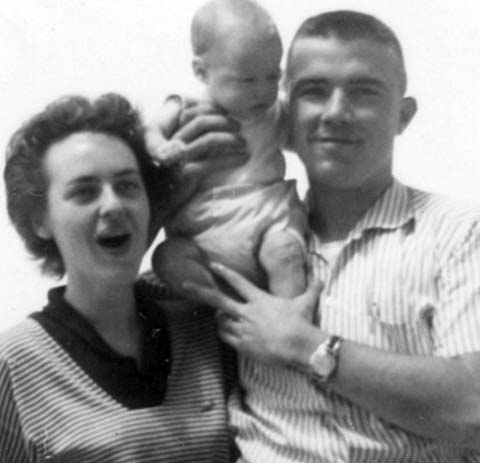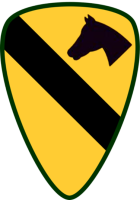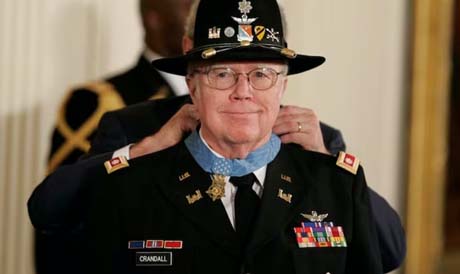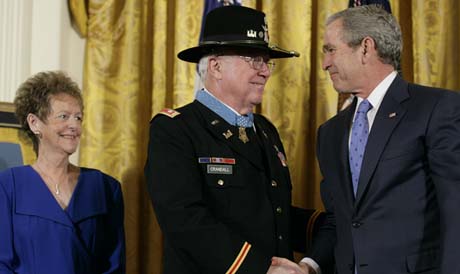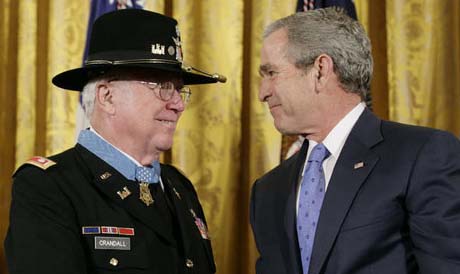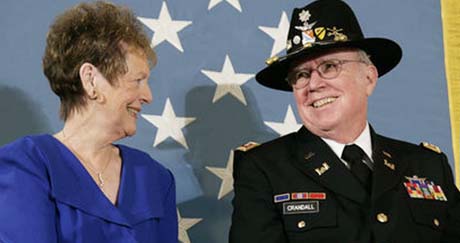A Master Army Aviator
Retired Lt. Col. Crandall is a veteran Master Army Aviator in both fixed-wing aircraft and helicopters. He led over 900 combat missions during two tours in Vietnam. Born in 1933, Crandall grew up in Olympia, Wash., where he played baseball and became a high school All-American athlete. He was drafted into the Army in 1953.
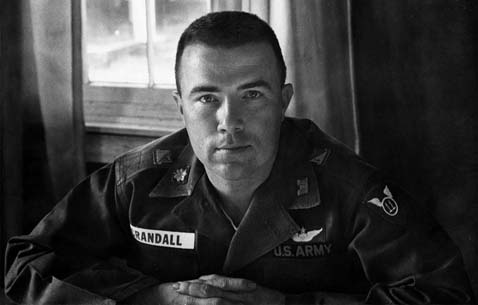
Col. Bruce Crandall entered the military just as the Korean War was winding down, he was commissioned as an officer and went through flight training on both fixed wing and rotary wing aircraft."
After commissioning and graduation from fixed-wing and helicopter training conducted by the Air Force and Army, he was assigned to a mapping group based out of the Presidio of San Francisco "that at the time was the largest flying military aviation unit in the world." From there he went to fly L-19 Bird Dogs and L-20 Beavers in Alaska, again for topographic studies. Crandall's first overseas flying assignment was to Wheelus Air Force Base in Tripoli, Libya, mapping the desert for two years flying YU-1 Otter, L-20 Beaver, L-19 Bird Dog and H-23 Raven aircraft as an instructor pilot and unit test pilot.
His next overseas tours were flying over thousands of square miles of previously unmapped mountains and jungles in Central and South America. For this mission, he was based out of Howard Air Force Base, Panama, and Costa Rica. While assigned to the 11th Air Assault Division, Crandall helped develop air-assault tactics as a platoon commander. In early 1965, he joined the Dominican Republic Expeditionary Force as a liaison to the 18th Airborne Corps. Later that year, he would command the 1st Cavalry Division's Company A, 229th Assault Helicopter Battalion at An Khe, Vietnam. Using the call sign "Ancient Serpent 6," he led a flying unit supporting eight battalions on the ground.
On Nov. 14, 1965, Crandall led the first major division operation of airmobile troops into Landing Zone X-Ray in Vietnam's Ia Drang Valley and is credited with evacuating some 70 wounded comrades with his wing man and fellow Medal of Honor recipient Maj. Ed Freeman. The two also flew in the ammunition needed for the 1st Bn., 7th Cav. Regiment to survive. The craft he was flying was unarmed.
In January 1966, during the first combined American and South Vietnamese Army operation, "Operation Masher,"" Crandall, while under intense enemy fire and with only a spot flashlight beam to guide him , twice dropped his Huey helicopter through the dense jungle canopy to rescue 12 wounded Soldiers. For his courage in that incident Crandall received the Aviation & Space Writers Helicopter Heroism Award for 1966.
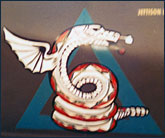
Ancient Serpent 6 — Emblem painted on Lt. Col. Crandall's Huey
After an assignment in Colorado, he attended the Armed Forces Staff College. Soon he was back in Vietnam, this time flying Huey gunships — "a big improvement" — supporting the 1st Bn., 9th Cavalry Squadron, 1st Cav. Div.
In January 1968, four months into his second tour, Crandall's helicopter was downed during another rescue attempt due to Air Force bombs going off too close to where he was flying. After five months in the hospital, with a broken back and other injuries, he resumed his career as a student earning a degree through the University of Nebraska in 1969. In Bangkok, Thailand, he would become a facility engineer managing 3,800 people. He subsequently served as deputy chief of staff, deputy installation commander, and commander of the 5th Engineer Combat Bn., all at Fort Leonard Wood, Mo.
South America was supposed to be his next assignment, and he and his wife, Arlene, attended the Defense Language Institute, Monterey, California, as Spanish language students in preparation for an role as aviation and engineering advisor to Argentina — an assignment that never came. A stroke sidelined Crandall, ending his flying career. After his recovery, the Crandalls did find the language training useful when he was sent to Caracas, Venezuela as the Defense Mapping Agency's director for the Interamerican Geodetic Survey.
In his final Army assignment, he served as senior engineer advisor to the California Army National Guard. Crandall retired from the Army in 1977 as a lieutenant colonel. Utilizing his master's degree in public administration, Crandall became city manager of Dunsmuir, California, for three years. He and Arlene then moved to Mesa, Arizona, where he served in the Public Works Department for 13 years, the last four as the public works manager.
In 1994, Crandall was inducted into the Air Force's "Gathering of Eagles" — an organization set up to recognize pioneers of aviation and heroic flyers. In 2001, Crandall was an aviation consultant on a movie about the Ia Drang Valley battle. The movie, based on the book "We Were Soldiers Once...and Young" was released in 2002. In 2004, Crandall was inducted into the Army Aviation Hall of Fame.
Throughout his career, Crandall was honored with many awards and decorations, including: the Distinguished Flying Cross with one oak leaf cluster; the Bronze Star Medal; the Meritorious Service Medal; the Air Medal (24 awards); the Army Commendation Medal; the Purple Heart; the National Defense Service Medal with one oak leaf cluster; the Armed Forces Expeditionary Medal; the Vietnam Service Medal (four campaigns); the Republic of Vietnam Campaign Medal with 60 device; a Presidential Unit Citation; a Meritorious Unit Citation; the Master Army Aviator Badge; the Vietnam Cross of Gallantry with Gold Star (three awards) and the Armed Forces Reserve Medal.
He and Arlene, married in 1956, have three sons and five grandchildren. The Crandalls live in Manchester, Washington.

